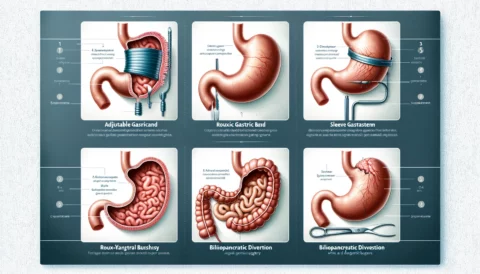A laparoscopic sleeve gastrectomy, also known as a sleeve gastrectomy or gastric sleeve surgery, is a technique for weight loss that includes removing a substantial section of the stomach. The surgery is conducted with a laparoscope, a thin, flexible tube with a small camera on the end that allows the surgeon to see inside the body.
Individuals who have been unable to achieve considerable weight loss with diet and exercise are often candidates for the treatment. It is also occasionally prescribed for those with weight-related health problems, including as type 2 diabetes, high blood pressure, and sleep apnea.

Typically, the procedure is conducted under general anesthesia and might last between one and three hours. During the surgery, the surgeon creates numerous tiny abdominal incisions through which the laparoscope and other surgical equipment are introduced. Using these equipment, the surgeon then removes a large section of the stomach, leaving behind a tiny, sleeve-shaped stomach.
Significant weight loss is one of the primary advantages of laparoscopic sleeve gastrectomy. According to studies, those who have the operation might lose between 50 and 70 percent of their extra weight in the first year. Additionally, many people see benefits in weight-related health issues such as type 2 diabetes, hypertension, and sleep apnea.
Another advantage of the technique is that it is less intrusive than gastric bypass surgery. The absence of small intestine rerouting allows for fewer difficulties and a quicker recovery.
There are, however, some dangers and drawbacks associated with the operation. One of the primary hazards is that the stomach may extend over time, which can result in weight gain. In addition, problems such as bleeding, infection, and blood clots are possible. After surgery, some patients may have nausea, vomiting, and acid reflux.
Additionally, it is essential to remember that the surgery is not a fast fix and involves a substantial commitment to lifestyle modifications. Individuals undergoing the treatment will be need to adhere to a stringent diet and fitness plan to maintain their weight loss. They will also be required to take vitamins and minerals supplements for the remainder of their lives.
Not covered by some insurance policies, surgery can be a costly alternative. It is essential to have a reasonable understanding of the expense and long-term commitment necessary following surgery.
In conclusion, a laparoscopic sleeve gastrectomy can be an effective weight reduction option for people who are significantly overweight or obese who have been unable to lose weight with diet and exercise alone. Before making a choice, it is essential to consider the prospective advantages and hazards, as well as the long-term commitment necessary following the operation. In addition, it is crucial to visit a knowledgeable healthcare practitioner to establish if the operation is the best decision for you.






